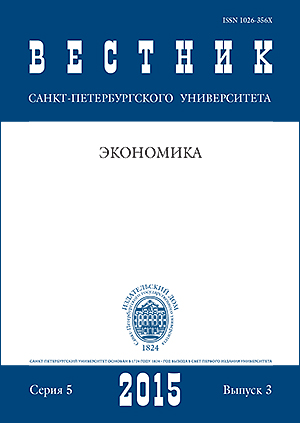An Empirical Study on the Role and Tasks of IT Top Managers in Germany
Аннотация
Today it is generally agreed that many business models, particularly in the service sector, rely heavily on adequate IT-support. The business agility of a company may be strongly influenced by the ability of the IT to support and even actively create business innovation and change [Sambamurthy et al., 2003; Melarkode et al., 2004], something we name IT agility [Nissen & Rennenkampff, 2013]. Quite opposite to the claim of Nicholas Carr [2003] “IT doesn’t matter“ this makes the IT under certain conditions a “strategic weapon” of the respective company that can lead to competitive advantage [Byrd & Turner,
2001].
Thus, the role of IT has changed considerably over time, at least from an academic point of view. But how is this reflected in the current role and tasks of leading IT-managers? Have companies really adopted this broader perspective that views IT as more than just a cost factor or, at best, reactive enabler of business? We addressed this research question by conducting an online survey of IT top managers in large German companies. Some key results are presented in this paper.
They highlight that IT today is mostly operated in a centralized way and organized as a cost center, with the CIO typically reporting to the CEO or CFO. For the position of a CIO companies predominantly search for candidates with an academic background. Technical IT-knowledge is regarded as more important for leading IT managers than previous management experience. While CIOs today adopt a broader view on IT tasks than before, the focus still is very much on rationalization
and optimization of IT with standardized and integrated IT processes. However, the support of the business strategy by the company’s IT is assessed better, the more the IT strategy is coordinated with the business strategy, but also the more the IT head is involved in the development of the business strategy. While the alignment of business and IT strategy is achieved satisfactorily from the viewpoint of the CIOs they simultaneously see insufficient IT expertise in the companies’ top management (with marked differences in the branches of industry). This and the fact that CIOs are today only to
a medium degree consulted in developing the business strategy of a company points to problems in deeply aligning business and IT in practice.
When it comes to IT agility and dealing with emerging information technologies the results also demonstrate a medium level of achievement, with adaptive abilities proving slightly better than proactive capabilities. Refs 26. Figs 13. Tables 4.
Ключевые слова:
business-IT alignment, CIO, IT management, IT tasks, IT agility, empirical study
Скачивания
Библиографические ссылки
References in Latin Alphabet
Luftman J., Zadeh h. S., Derksen B., Santana M., Rigoni E. H., huang Z. Key information technology and management issues 2012-2013. An international study. Journal of Information Technology, 2013, vol. 28(4), pp. 354–366.
Translation of references in Russian into English
Загрузки
Опубликован
Как цитировать
Выпуск
Раздел
Лицензия
Статьи журнала «Вестник Санкт-Петербургского университета. Экономика» находятся в открытом доступе и распространяются в соответствии с условиями Лицензионного Договора с Санкт-Петербургским государственным университетом, который бесплатно предоставляет авторам неограниченное распространение и самостоятельное архивирование.






